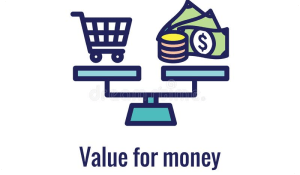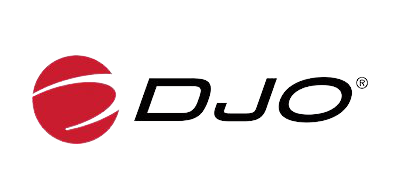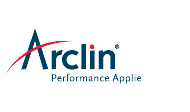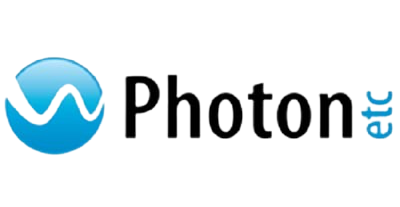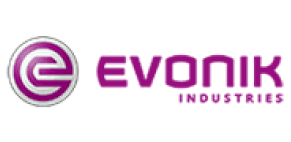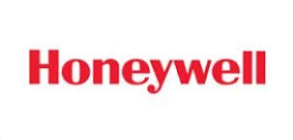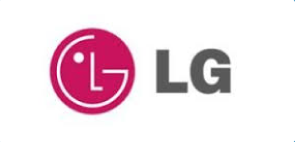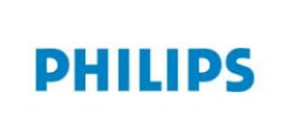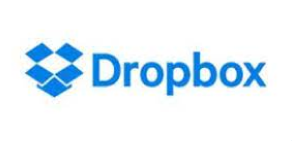Report Summary
Summary
Educational technology is the study and ethical practice of facilitating learning and improving performance by creating, using, and managing appropriate technological processes and resources.
E-learning is utilized by public K–12 schools in the United States as well as private schools. Some e-learning environments take place in a traditional classroom, others allow students to attend classes from home or other locations. There are several states that are utilizing virtual school platforms for e-learning across the country that continue to increase. Virtual school enables students to log into synchronous learningor asynchronous learning courses anywhere there is an internet connection.
In 2020, the global K-12 Education Technology Spend market size was xx million US$ and it is expected to reach xx million US$ by the end of 2027, with a CAGR of xx% between 2021 and 2027.
This report studies the K-12 Education Technology Spend market size by players, regions, product types and end industries, history data 2017-2020 and forecast data 2020-2027; This report also studies the global market competition landscape, market drivers and trends, opportunities and challenges, risks and entry barriers, sales channels, distributors and Porter's Five Forces Analysis.
This report focuses on the global top players, covered
Chungdahm Learning
Dell
Educomp Solutions
Next Education
Samsung
TAL Education Group
Tata Class Edge
Adobe Systems
Blackboard
BenQ
Cengage Learning
D2L
Ellucian
IBM
Intel
Knewton
Mcmillan Learning
McGraw-Hill Education
Microsoft
Oracle
Pearson Education
Promethean World
Saba Software
Smart Technologies
Market segment by Regions/Countries, this report covers
North America
Europe
China
Rest of Asia Pacific
Central & South America
Middle East & Africa
Market segment by Type, the product can be split into
Hardware
Software
Solution
Support
Market segment by Application, the market can be split into
Pre-primary School
Primary School
Middle School
High School
The study objectives of this report are:
To study and forecast the market size of K-12 Education Technology Spend in global market.
To analyze the global key players, SWOT analysis, value and global market share for top players.
To define, describe and forecast the market by type, end use and region.
To analyze and compare the market status and forecast among global major regions.
To analyze the global key regions market potential and advantage, opportunity and challenge, restraints and risks.
To identify significant trends and factors driving or inhibiting the market growth.
To analyze the opportunities in the market for stakeholders by identifying the high growth segments.
To strategically analyze each submarket with respect to individual growth trend and their contribution to the market
To analyze competitive developments such as expansions, agreements, new product launches, and acquisitions in the market.
To strategically profile the key players and comprehensively analyze their growth strategies.
In this study, the years considered to estimate the market size of K-12 Education Technology Spend are as follows:
History Year: 2017-2020
Base Year: 2020
Estimated Year: 2020
Forecast Year 2021 to 2027
For the data information by region, company, type and application, 2020 is considered as the base year. Whenever data information was unavailable for the base year, the prior year has been considered.
Key Stakeholders
Raw material suppliers
Distributors/traders/wholesalers/suppliers
Regulatory bodies, including government agencies and NGO
Commercial research & development (R&D) institutions
Importers and exporters
Government organizations, research organizations, and consulting firms
Trade associations and industry bodies
End-use industries
Available Customizations
With the given market data, EternityInsights offers customizations according to the company's specific needs. The following customization options are available for the report:
Further breakdown of K-12 Education Technology Spend market on basis of the key contributing countries.
Detailed analysis and profiling of additional market players.
Table Of Contents
Table of Contents
K-12 Education Technology Spend Market Report by Company, Regions, Types and Applications, Global Status and Forecast to 2025
1 Industry Overview of K-12 Education Technology Spend
1.1 K-12 Education Technology Spend Market Overview
1.1.1 K-12 Education Technology Spend Product Scope
1.1.2 Market Status and Outlook
1.2 Global K-12 Education Technology Spend Market Size and Analysis by Regions
1.2.1 North America
1.2.2 Europe
1.2.3 China
1.2.4 Rest of Asia Pacific
1.2.5 Central & South America
1.2.6 Middle East & Africa
1.3 K-12 Education Technology Spend Market by Type
1.3.1 Hardware
1.3.2 Software
1.3.3 Solution
1.3.4 Support
1.4 K-12 Education Technology Spend Market by End Users/Application
1.4.1 Pre-primary School
1.4.2 Primary School
1.4.3 Middle School
1.4.4 High School
2 Global K-12 Education Technology Spend Competition Analysis by Players
2.1 K-12 Education Technology Spend Market Size (Value) by Players (2018 and 2019)
2.2 Competitive Status and Trend
2.2.1 Market Concentration Rate
2.2.2 Product/Service Differences
2.2.3 New Entrants
2.2.4 The Technology Trends in Future
3 Company (Top Players) Profiles
3.1 Chungdahm Learning
3.1.1 Company Profile
3.1.2 Main Business/Business Overview
3.1.3 Products, Services and Solutions
3.1.4 K-12 Education Technology Spend Revenue (Value) (2017-2020)
3.1.5 Recent Developments
3.2 Dell
3.2.1 Company Profile
3.2.2 Main Business/Business Overview
3.2.3 Products, Services and Solutions
3.2.4 K-12 Education Technology Spend Revenue (Value) (2017-2020)
3.2.5 Recent Developments
3.3 Educomp Solutions
3.3.1 Company Profile
3.3.2 Main Business/Business Overview
3.3.3 Products, Services and Solutions
3.3.4 K-12 Education Technology Spend Revenue (Value) (2017-2020)
3.3.5 Recent Developments
3.4 Next Education
3.4.1 Company Profile
3.4.2 Main Business/Business Overview
3.4.3 Products, Services and Solutions
3.4.4 K-12 Education Technology Spend Revenue (Value) (2017-2020)
3.4.5 Recent Developments
3.5 Samsung
3.5.1 Company Profile
3.5.2 Main Business/Business Overview
3.5.3 Products, Services and Solutions
3.5.4 K-12 Education Technology Spend Revenue (Value) (2017-2020)
3.5.5 Recent Developments
3.6 TAL Education Group
3.6.1 Company Profile
3.6.2 Main Business/Business Overview
3.6.3 Products, Services and Solutions
3.6.4 K-12 Education Technology Spend Revenue (Value) (2017-2020)
3.6.5 Recent Developments
3.7 Tata Class Edge
3.7.1 Company Profile
3.7.2 Main Business/Business Overview
3.7.3 Products, Services and Solutions
3.7.4 K-12 Education Technology Spend Revenue (Value) (2017-2020)
3.7.5 Recent Developments
3.8 Adobe Systems
3.8.1 Company Profile
3.8.2 Main Business/Business Overview
3.8.3 Products, Services and Solutions
3.8.4 K-12 Education Technology Spend Revenue (Value) (2017-2020)
3.8.5 Recent Developments
3.9 Blackboard
3.9.1 Company Profile
3.9.2 Main Business/Business Overview
3.9.3 Products, Services and Solutions
3.9.4 K-12 Education Technology Spend Revenue (Value) (2017-2020)
3.9.5 Recent Developments
3.10 BenQ
3.10.1 Company Profile
3.10.2 Main Business/Business Overview
3.10.3 Products, Services and Solutions
3.10.4 K-12 Education Technology Spend Revenue (Value) (2017-2020)
3.10.5 Recent Developments
3.11 Cengage Learning
3.12 D2L
3.13 Ellucian
3.14 IBM
3.15 Intel
3.16 Knewton
3.17 Mcmillan Learning
3.18 McGraw-Hill Education
3.19 Microsoft
3.20 Oracle
3.21 Pearson Education
3.22 Promethean World
3.23 Saba Software
3.24 Smart Technologies
4 Global K-12 Education Technology Spend Market Size by Type and Application (2017-2020)
4.1 Global K-12 Education Technology Spend Market Size by Type (2017-2020)
4.2 Global K-12 Education Technology Spend Market Size by Application (2017-2020)
4.3 Potential Application of K-12 Education Technology Spend in Future
4.4 Top Consumer/End Users of K-12 Education Technology Spend
5 North America K-12 Education Technology Spend Development Status and Outlook
5.1 North America K-12 Education Technology Spend Market Size (2017-2020)
5.2 North America K-12 Education Technology Spend Market Size and Market Share by Players (2018 and 2019)
6 Europe K-12 Education Technology Spend Development Status and Outlook
6.1 Europe K-12 Education Technology Spend Market Size (2017-2020)
6.2 Europe K-12 Education Technology Spend Market Size and Market Share by Players (2018 and 2019)
7 China K-12 Education Technology Spend Development Status and Outlook
7.1 China K-12 Education Technology Spend Market Size (2017-2020)
7.2 China K-12 Education Technology Spend Market Size and Market Share by Players (2018 and 2019)
8 Rest of Asia Pacific K-12 Education Technology Spend Development Status and Outlook
8.1 Rest of Asia Pacific K-12 Education Technology Spend Market Size (2017-2020)
8.2 Rest of Asia Pacific K-12 Education Technology Spend Market Size and Market Share by Players (2018 and 2019)
9 Central & South America K-12 Education Technology Spend Development Status and Outlook
9.1 Central & South America K-12 Education Technology Spend Market Size (2017-2020)
9.2 Central & South America K-12 Education Technology Spend Market Size and Market Share by Players (2018 and 2019)
10 Middle East & Africa K-12 Education Technology Spend Development Status and Outlook
10.1 Middle East & Africa K-12 Education Technology Spend Market Size (2017-2020)
10.2 Middle East & Africa K-12 Education Technology Spend Market Size and Market Share by Players (2018 and 2019)
11 Market Forecast by Regions, Type and Application (2021-2027)
11.1 Global K-12 Education Technology Spend Market Size (Value) by Regions (2021-2027)
11.1.1 North America K-12 Education Technology Spend Revenue and Growth Rate (2021-2027)
11.1.2 Europe K-12 Education Technology Spend Revenue and Growth Rate (2021-2027)
11.1.3 China K-12 Education Technology Spend Revenue and Growth Rate (2021-2027)
11.1.4 Rest of Asia Pacific K-12 Education Technology Spend Revenue and Growth Rate (2021-2027)
11.1.5 Central & South America K-12 Education Technology Spend Revenue and Growth Rate (2021-2027)
11.1.6 Middle East & Africa K-12 Education Technology Spend Revenue and Growth Rate (2021-2027)
11.2 Global K-12 Education Technology Spend Market Size (Value) by Type (2021-2027)
11.3 Global K-12 Education Technology Spend Market Size by Application (2021-2027)
12 K-12 Education Technology Spend Market Dynamics
12.1 K-12 Education Technology Spend Market Opportunities
12.2 K-12 Education Technology Spend Challenge and Risk
12.2.1 Competition from Opponents
12.2.2 Downside Risks of Economy
12.3 K-12 Education Technology Spend Market Constraints and Threat
12.3.1 Threat from Substitute
12.3.2 Government Policy
12.3.3 Technology Risks
12.4 K-12 Education Technology Spend Market Driving Force
12.4.1 Growing Demand from Emerging Markets
12.4.2 Potential Application
13 Market Effect Factors Analysis
13.1 Technology Progress/Risk
13.1.1 Substitutes
13.1.2 Technology Progress in Related Industry
13.2 Consumer Needs Trend/Customer Preference
13.3 External Environmental Change
13.3.1 Economic Fluctuations
13.3.2 Other Risk Factors
14 Research Finding/Conclusion
15 Appendix
Methodology
Analyst Introduction
Data Source




